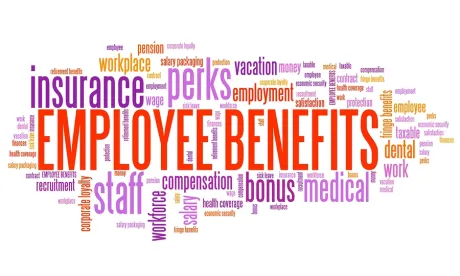Less than a month after the American Rescue Plan Act of 2021 (ARPA) was signed into law, new U.S. Department of Labor (DOL) guidance and model forms are clearing up a number of employer concerns about the 100 percent COBRA coverage subsidy for continuing health benefits that runs from April 1, 2021, to September 30, 2021.
Though employers still await COBRA premium subsidy regulations, including guidance from the Internal Revenue Service (IRS) on claiming reimbursements, on April 7, 2021, the DOL’s Employee Benefits Security Administration (EBSA) issued guidance in the form of frequently asked questions (FAQs), which provides clarity in certain areas.
Along with the FAQs, the EBSA also published several model COBRA notices:
-
an election notice for “Assistance Eligible Individuals” (AEIs) experiencing qualifying events from April 1, 2021, through September 30, 2021;
-
an election notice for AEIs currently enrolled in COBRA coverage, or who experienced a qualifying event prior to April 1, 2021, but who never enrolled in, or discontinued, COBRA coverage;
-
an alternative election notice to be used by plans subject to state “mini-COBRA” laws;
-
a notice of expiration of the premium subsidy; and
-
a summary of the premium assistance and “Request for Treatment as an Assistance Eligible Individual” form, to be provided along with the other model notices.
The FAQs and model notices shed light on the following issues.
COBRA Deadline Extensions
In the FAQs, the EBSA clarifies that deadlines to elect fully subsidized COBRA coverage under the ARPA are not subject to the deadline extensions put in place during the pandemic by the DOL and the IRS. Delaying the deadlines to elect subsidized COBRA coverage by up to one year would have made it more difficult for employers to administer the subsidy. Individuals must elect subsidized COBRA coverage, using the provided election form, within 60 days of the date on the election notice.
Choice of COBRA Coverage Start Dates
The FAQs guidance emphasizes that AEIs with qualifying events that occurred before April 1, 2021, may be able to choose two very different COBRA coverage arrangements. First, someone eligible for COBRA benefits due to an involuntary termination of employment or reduction in hours that occurred in mid-2020, during the period of time that the pandemic-related deadline was extended, would be able to elect COBRA coverage in 2021 that would be effective back to the date of the qualifying event. Such an AEI would be charged COBRA premiums for coverage periods up until April 1, 2021, when the subsidy would begin. Alternatively, this AEI could elect to take advantage only of the subsidized COBRA premiums, which would not go back to the date of his or her qualifying event, but would start on April 1, 2021. This choice is highlighted in the relevant model notices.
The FAQs also note that an employer may need to reimburse or credit individuals for COBRA premium payments they made if it is later discovered that the payment corresponded to one month of COBRA coverage for which the individual was eligible for the premium assistance.
No Extended Election Periods Under State Mini-COBRA Laws
The FAQs also clarify that the ARPA did not modify the definition of “election period” in any state “mini-COBRA” laws. The ARPA added an extended COBRA election period for individuals who would be eligible for assistance had they elected or not discontinued federal COBRA coverage prior to April 1, 2021. The FAQs clarify that employers subject to state mini-COBRA laws will not be required to provide the special subsidized COBRA election notice to such individuals. This is consistent with the EBSA model Alternative Notice for use by employers or plans subject to state mini-COBRA laws, and their AEIs who experience qualifying events from April 1, 2021, through September 30, 2021.
Eligibility for Other Group Coverage vs. Individual Coverage
Under the ARPA, eligibility for Medicare or other group health coverage, such as coverage under a spouse’s employer’s plan or a new employer’s plan, would make an individual ineligible for the COBRA premium subsidy. The FAQs guidance makes clear that eligibility for Medicaid or individual Affordable Care Act (ACA) marketplace coverage does not make an individual ineligible for the COBRA premium subsidy. In fact, the FAQs point out that individuals may want to drop individual coverage or Medicaid to take advantage of the subsidy period.
Potential Penalties for ARPA Subsidy Failures
Although the ARPA did not impose new penalties for employers, plans, or insurers for failure to comply with the COBRA premium subsidy rules, the FAQs highlight that employers are subject to COBRA’s existing civil penalty structure for any ARPA subsidy-related failures, including failure to provide the subsidy or failure to provide required notices. The excise tax for COBRA violations “could be as much as $100 per qualified beneficiary” (to a family maximum of $200) for each day that the violation continues.
Unanswered Questions
The FAQs and model notices leave some important questions unaddressed. First, this initial guidance does not include details on administering the Medicare tax credit designed to reimburse employers for the foregone COBRA premiums. The IRS has issued a draft Form 7200 for employers to claim an advance payment of the tax credit, but we anticipate that the IRS will also issue a revised Form 941 and additional guidance in the near future.
Also, while the FAQs acknowledge that employers will need to look back in time to identify all potential AEIs who may have a second election opportunity (“generally” to October 1, 2019, according to the FAQs), the FAQs do not clarify whether an individual who is entitled to COBRA coverage in April 2021, or beyond, due to a second qualifying event or a disability extension of COBRA coverage, could be an AEI. For example, if an employee was involuntarily terminated in November 2018, and her COBRA coverage began on December 1, 2018, her 18-month maximum coverage period would ordinarily expire on May 31, 2020, and she would not be an AEI. However, if she became entitled to the 11-month disability extension of COBRA coverage, her maximum COBRA coverage period would expire on April 30, 2021. The wording of the ARPA itself suggests that she would be an AEI in this situation, but confirmation from the DOL would be welcome.
Another unanswered question is whether mutual separations or voluntary reduction in force programs should be categorized as voluntary or involuntary terminations of employment for purposes of the COBRA premium subsidy. In addition, guidance would be welcome regarding whether, when a formerly involuntarily terminated employee who is an AEI and is rehired by the same employer, and thus becomes eligible for the employer’s health plan again, would then lose eligibility for the subsidy.





 />i
/>i

